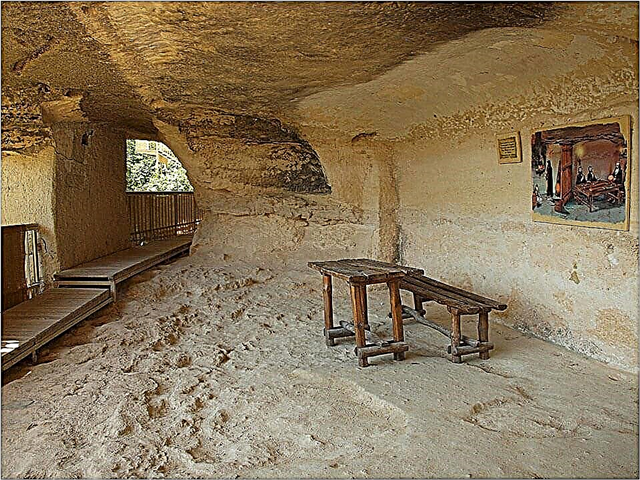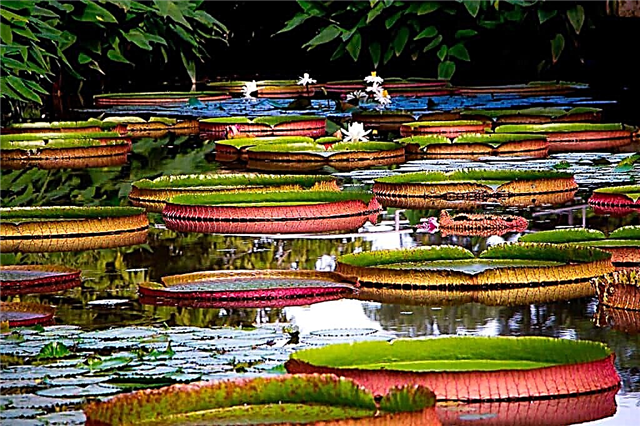The Botanical Garden of Singapore is more than seventy hectares of natural splendor, from the view of which even the most inveterate inhabitants of megacities take their breath away. Its territory is recognized by UNESCO as a World Heritage Site, but without this honor, the area would still not have escaped the increased attention of tourists. A more beautiful nature reserve has not yet appeared in Southeast Asia, and it is a real blasphemy not to visit there when you come to Singapore.
History and description
British colonialist Thomas Raffles is a significant figure in Singaporean history. In fact, he is the founder of modern-day Singapore. In the winter of 1819, an expedition under his leadership landed on the island, and the Englishman vividly realized how strategically and geographically advantageous the local land was. Having concluded an agreement with the Sultan of Johor, he organized a British colony on the island. However, this was not the end of the scientist's deeds. With his submission, the first botanical garden was founded in Singapore. As a scientist, he set out to investigate the fertility of the local soil, and the experiment successfully existed until 1829.
Thirty years after the closure, it was decided to create a new botanical garden - it is he who has survived to this day. Laurence Niven was responsible for the planning, and his ideas can be clearly seen in modern design. In 1888, the director of the facility was appointed "Nutty" Ridley, in reality - Henry Ridley, who started breeding the first rubber plants. His bold and experimental methods have led the island to become the world's premier supplier of rubber.
During the Second World War, the territory of Singapore was occupied by the Japanese. Despite the invasion, they took great care of the natural heritage, continuing to breed new crops and carefully caring for the planted plants. After the end of hostilities, the garden again came under the jurisdiction of the British, and remained under their patronage until the declaration of independence.

The modern botanical garden is an amazing natural reserve in which most visitors stay not for an hour or two, but for the whole day. They are attracted not only by the vast green areas and unprecedented plants, but also by the developed infrastructure - on the territory of the garden you can have a snack, go to the toilet without any problems, and enjoy an amazing concert program. In the middle of Lake Symphony, a stage is built where an orchestra plays on a weekend, and every visitor can enjoy amazing melodies for free. In addition, this is the only garden in the world that is open at any time of the year and is open almost all day: from five in the morning until twelve at night.
What to see
Often, one day is not enough to cover all the significant places in the Singapore Garden. Say what you like, but on its territory you can feel not so much an ordinary tourist as a real researcher-botanist. Even individuals ignorant of plants, no, no, they take out their phones to take a picture of an outlandish flower or an unusual branchy tree. But if there is not too much time, it is worth capturing at least the most outstanding points, which will certainly leave a deep imprint on the memory.

- A tropical forest.
This section of the Botanical Garden has not been bred by botanists, but carefully preserved by them, and is much older than other plants in age. The area of 6 hectares is occupied by untouched tropical trees. It is truly amazing to discover this wild place in the middle of a large city.

- Botany Center
Two brand new buildings will be especially interesting for those who are seriously involved in botany. On their territory there is an extensive library, a herbarium, a guest service center and a cozy cafe. It is noteworthy that the walls are painted with leaf ornaments, and the roof of one of the pavilions is completely covered with living grass.
- Lakes
There are three lakes on the territory of the garden: Swan, Ecological and Symphonic. As mentioned above, the latter is notable for the fact that free Sunday concerts are held in the center. The other two are famous for representatives of the local fauna: the surface of Swan Lake was chosen by snow-white swans, and the ecological one - by ducks.

- Ginger garden
On approximately one hectare of land, many ginger plants are planted, in most of which a waterfall is of stunning beauty. In addition, there is a good restaurant on the gingerbread territory, which offers guests both European and Asian dishes. Of course, both contain a certain amount of ginger.
- Jacob Ballas Garden
The area is primarily oriented towards the youngest visitors. It was opened in 2007 thanks to the efforts of a local philanthropist. It is a paradise for children who can take advantage of the play area, tree houses and interactive exhibits. This is a great place for games and for gaining new knowledge - some parts of the exhibition tell how natural dyes are used in the manufacture of drinks and medicines.
- Spice and Herb Garden
A fragrant corner of the Botanical Garden for spice lovers. Here you can not only look at the plants, but also find out what spices Singapore exports.
- Sundial garden
A sundial is built in the center of the area, surrounded by four pools. This corner is especially popular with couples in love - it is here that it is customary to take joint photos.
National Orchid Garden
Despite all of the above-mentioned outstanding corners of the Botanical Garden, most visitors come here precisely because of the beautiful orchids. More than 1,000 orchid varieties and even more hybrids have been planted on an area of more than three hectares. A camera has not yet been invented that could convey the riot of colors that opens up to travelers. Despite the fact that flowers grow throughout the area, the main wealth is in the main greenhouse - from the many shades and intoxicating aroma, even the most persistent tourists lose their heads!

At the exit from the orchid garden, there is an amusing souvenir shop, where everyone can buy a souvenir. For example, a pendant or earrings in the shape of a flower. The production technology itself is surprising - a living flower is dipped in gold or silver, covering its surface with a thin layer of precious metal.
Important: the entrance to the Botanical Garden is free, but you need to buy a ticket to the orchid garden (since it is open until seven in the evening, sales close at six).
How to get there
There are several ways to get to the Botanical Garden:
- Metro: a station called Botanic Gardens Station;
- Bus: no. 48, no. 66, no. 151, no. 153, no. 154, no. 156, no. 170. Stop "Singapore Botanic Gardens";
Important: Be sure to check the route with the driver! It happens that they change it without giving any reason.
- Taxi. Will cost about $ 20. You can't catch a car in Singapore "from your hand" - you need to go to a specially designated place for landing. If you see a long queue - feel free to approach;
- Rent a car: Renting a car in Singapore is not cheap. On average it costs $ 150 per day.











